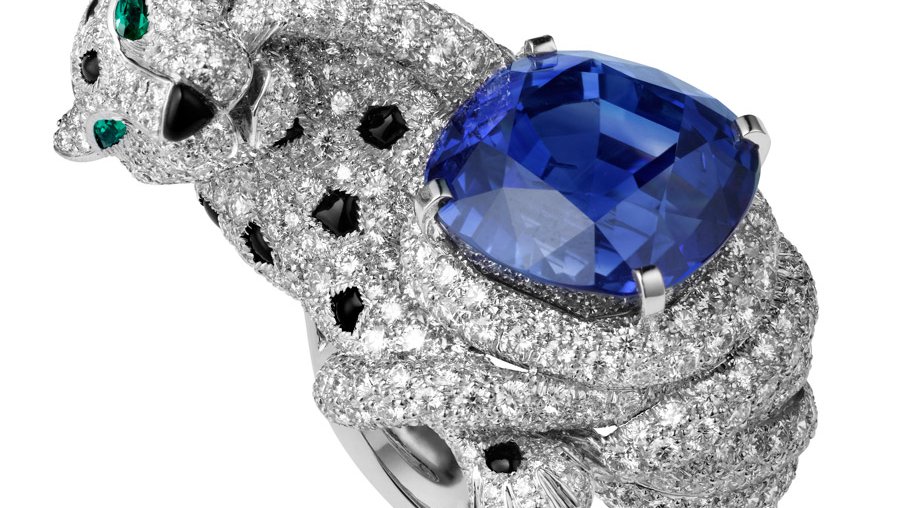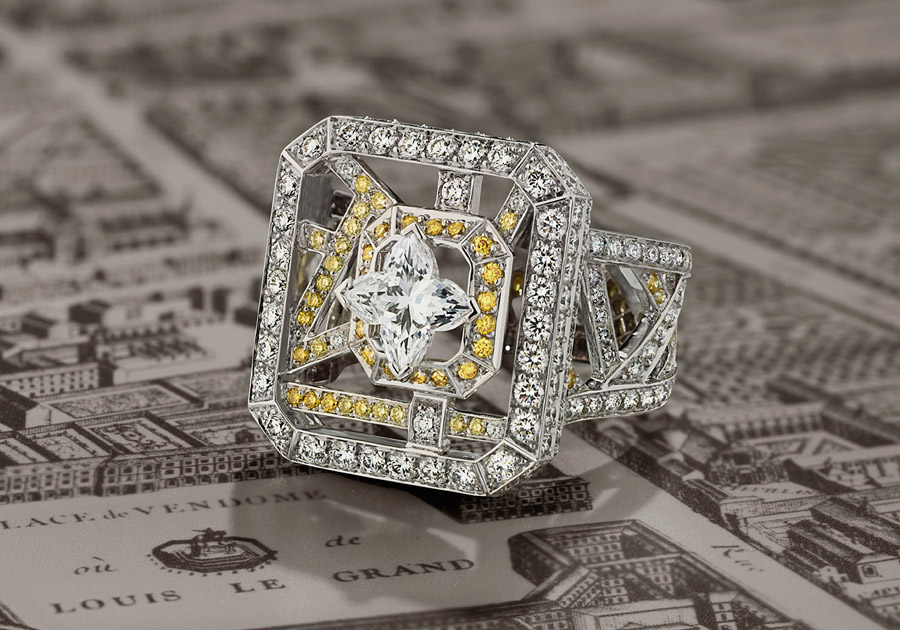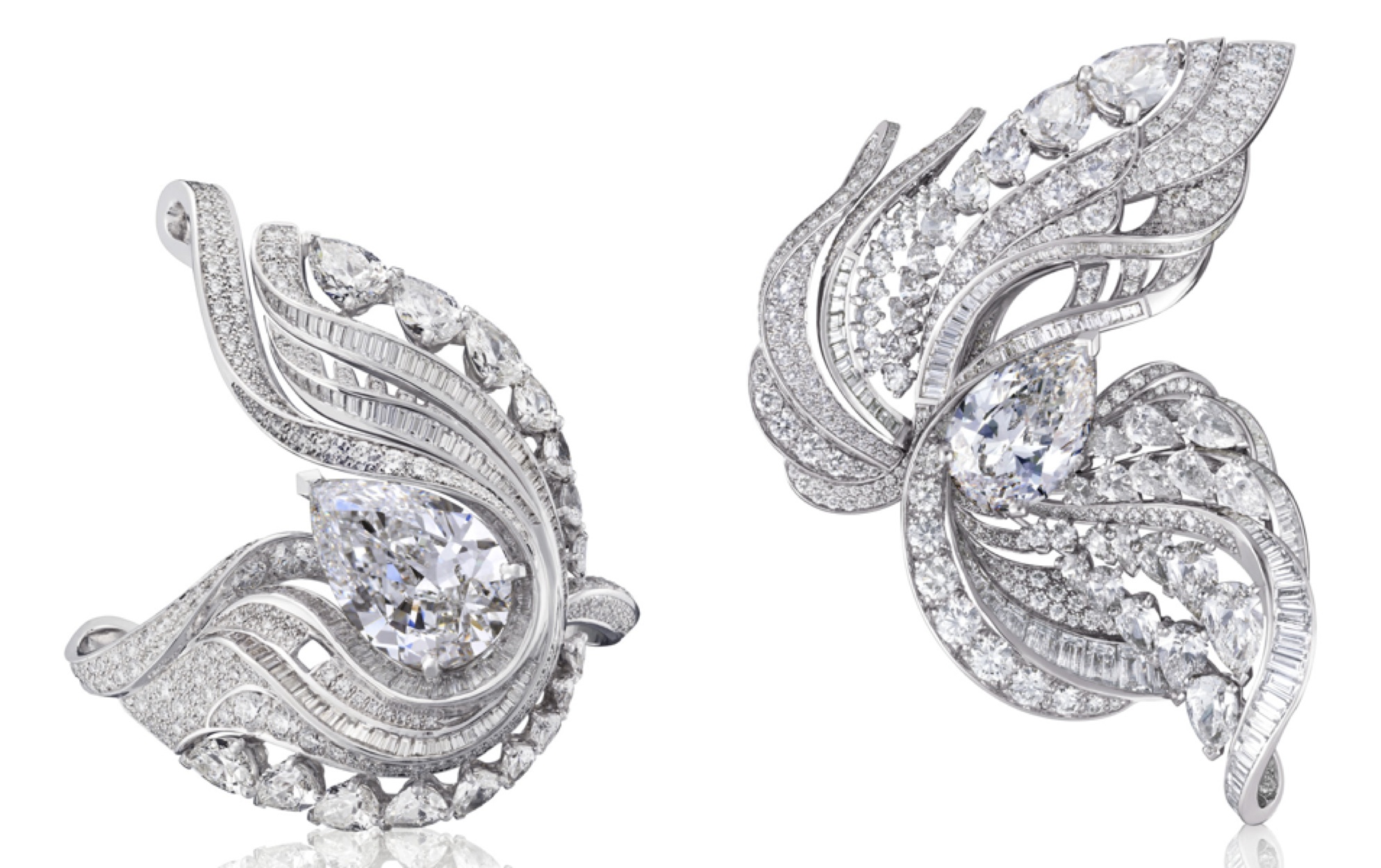The Jewellery Editor, Maria Doulton, reflects on the re-invigoration of fine jewellery during Paris Haute Couture week

The Jewellery Editor, Maria Doulton, reflects on the re-invigoration of fine jewellery during Paris Haute Couture week
The rarefied world of haute joaillerie is looking perkier and more youthful than it has for many years. The arrival of Louis Vuitton’s dedicated jewellery boutique and atelier, on the prominent corner site of Place Vendôme, is but one indicator that the industry believes that there is a bright future for this Grande dame of luxury.
This re-invigoration of fine jewellery was evident during Paris Haute Couture week in early July, when maisons such as Dior, Chanel and Vuitton showed their magnificent wares at the same time as the catwalk shows, oft inviting the wealthiest of couture clients to view both collections in tandem. Never has the frisson of fashion been more closely felt in the normally staid chambers of high jewellery.
“ 10 years ago high jewellery moved at a glacial pace, innovation was virtually unheard of. But as the big names in luxury move into this market, the ante has been raised ”
For the first time, De Beers, Alexandre Reza and Harry Winston chose to show during couture week. Add to this the fact that the majority of the jewellery collections were previews for the Biennale des Antiquaires in September – the most important high jewellery event for clients that comes but once every two years – and you can understand why quantity and creativity of jewels on show were at an all time high.
Now, this has to be telling us something about the climate in the world of high jewellery, an industry that only ten years ago moved at a glacial pace and where innovation was virtually unheard of. But as the big names in luxury – again Dior, Chanel and most recently Louis Vuitton – move into this market, the ante has been raised and high jewellery collections are looking bigger and more impressive than in previous years.

CartierBiennale Lion Ring – Platinum, one cushion-cut sapphire, onyx spots and snout, emerald eyes, brilliants. Photograph Vincent Wulveryck © Cartier 2012
It may be tempting for some to think that Vuitton’s arrival, in the traditional epicentre of luxury jewellery, has prompted the older Place Vendôme jewellers to react with more opulent and exciting collections. Though it is perhaps just another manifestation of the fact that haute joaillerie, which during the 1980’s and 90’s dwindled all but into a fusty funk, is once again experiencing a period of exciting growth.
With an increase in the world’s wealthy and a younger profile of customer, it makes sense for the big names in luxury – couturiers, trunks makers or watch houses – to increase their product offering to include fine jewellery, which is relevant to a new generation of consumers who have bought into their carefully curated brand.
Think of Hermès’ suggestive equestrian inspired diamond whip necklace or Vuitton’s jewels that use diamond cuts that replicate the monogram pattern or the fastenings more normally found on their trunks.
“ With an increase in the world’s wealthy and a younger profile of customer, it makes sense for the big names in luxury to launch fine jewellery ”
All of this suggests the jewellery sector is getting the full heat of the luxury industry’s fast growth incubator. And with reason, the Richemont Group reported that in 2012 their jewellery maisons represented 52% of sales by area against 26% for watches. Between Cartier and Van Cleef & Arpels sales grew from €3,479 million in 2011 to €4,590 million in 2012, representing an increase in 32% for jewellery sales similar to the 31% for watches.
And if we look at how the luxury conglomerates turned around the watch industry ten years ago, it appears that the same fervour is being focused on, the until now largely unbranded and under exploited, jewellery industry.
If change is an indicator of each army marshalling their troops, then there is plenty of that around. In March 2011 LVMH bought Bulgari, the Italian luxury jeweller and Boucheron of the PPR Group appointed a new CEO Pierre Bouissou, formerly Managing Director of rival LVMH’s Berluti shoe company. Even houses better known for watches, such as Piaget, are increasing their jewellery offering and this year the Swiss watch house from the Richemont stable, is to present its largest high jewellery collection ever at the Biennale des Antiquaires.

Louis Vuitton Escale á Paris high jewellery collection, a ring that maps out the streets Place Vendôme. Photograph by Coppi Barbieri for Louis Vuitton
De Beers, the name in diamonds, has spent the last eleven years since it launched its retail partnership with LVMH in 2001, building up its reputation not as a miner, but as a jeweller. The collection launched during Paris Haute Couture week called ‘Imaginary Nature’ is its most ambitious collection yet with designs and craftsmanship taking it into another realm of creativity and ambition, a sign that this house is looking to establish itself as a player in the very top echelons of haute joaillerie.
The messages from almost every jewellery house, young or old, is unexpectedly in tune. All talk about their heritage and craftsmanship – something you would expect from a product with a five or six figure price tag – showing that however funky Victoire de Castellane’s designs may be at Dior, or however daring Lorenz Bäumer’s jewellery for Louis Vuitton, heritage is always there to offer security and comfort to would-be purchasers.
“ If we look at how the luxury conglomerates turned around the watch industry 10 years ago, it seems the same fervour is being focused on fine jewellery ”
Chanel celebrates the 80th anniversary of the Bijoux en Diamants, a one-off jewellery collection by Gabrielle Chanel, by remaining faithful to the style codes dictated by the late couturier. Comets, diamonds, feathers and stars are recreated in diamonds and white gold to take us back to the future with Coco.
Boucheron along with its new CEO also has appointed a new head of design but sticks to classic house symbols such as the snake, the chameleon and ivy the collection and gives them a thoroughly modern twist, presumably for an audience that wants jewels as cutting edge as their couture wardrobes.
So what about the jewels themselves? How much do they reflect the changes that are taking place in the industry? I most certainly noted products that promoted an increased ease when it came to wearing the jewels. Rather than ceremonially large diamonds in necklaces and rings that shout “I am rich”, the jewels of 2012 whisper “I am an individual and a connoisseur”.

De Beers’ (L-R) Embrace ring, Ascendant ring
This is achieved through several means, from the design in which more open worked metal allows for lighter, easier to wear jewels to a wider range of styles, stones and diamond-cuts. De Beers excelled in managing to present many, many carats of perfect white diamonds in designs that looked as soft and downy as a swan’s wing that would almost flutter onto your neck with the lightest caress.
Piaget’s Couture Precieuse necklace packs in some 44 carats into a structure as light as lace. With much hard graft going into the structure of jewels to create articulations and metal that moves like fabric, most of the pieces seen over the week are actually comfortable to wear. Swags, beads and tassels all add to the idea of jewels that move with the body, a step away from the more rigid settings seen previously.
“ Rather than ceremonially large diamonds that shout ‘I am rich’, the jewels of 2012 whisper ‘I am an individual and a connoisseur’ ”
Use of unusual stones and a wider colour palette marks the collections of Van Cleef & Arpels, Cartier and Dior giving a more mysterious feel to the jewels and a very individual look that even experts would be pushed to put an exact value on.
This artistic, highly creative approach shows jewellery buyers value the aesthetics of jewels as much as their bank-ability. Hence the rise of the shy opal, the enigmatic swirls of the baroque pearl and the rise of lesser known gems such as the violet spinel or moody morganite, where one would traditionally expect to find a sapphire or other ‘important’ stone.
With such fireworks on display, what will be left for the Biennale des Antiquaires? I am sure that the luxury houses have plenty more tricks up their sleeves, as the show has only just begun.
To further investigate fine jewellery and timepieces on Luxury Society, we invite your to explore the related materials as follows:
– Luxury Without Limitation or Compromise: Steven Grotell
– Baselworld 2012: The Antithesis of Mass Luxury
– Luxury Timepiece Brands Using Craftsmanship in Video










